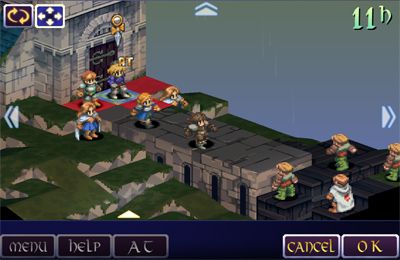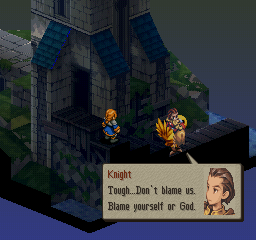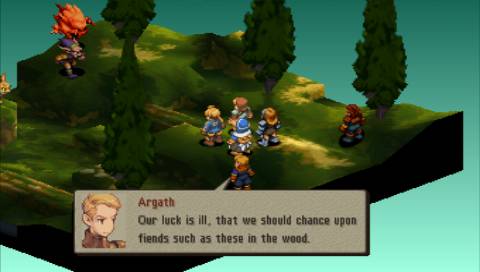Howdy folks! This week I bring you the first part in a (sporadic) series of limited theory articles. First up, a big concept that will help you win games of limited. It will help with constructed too, if you’re into that sort of thing. So here we go.
You are likely to win a game of Magic if you can gain tactical advantage over your opponent. What does that mean? Basically, forcing your opponent to use her resources less efficiently than you use your resources.
In its simplest form, a deck with 17 Plains and 23 Raise the Alarms has tactical advantage over a deck with 17 Islands and 23 Fugitive Wizards. Both decks play nothing but 1/1 creatures, but the Raise the Alarm deck gets two out over every card while the Fugitive Wizard deck only gets one. Sure, the blue deck gets a head start because its cards cost less mana, but the deck isn’t fast enough to win before the white deck overwhelms the blue deck in creatures on board. Both decks have the same strategy—attack with 1/1 creatures—but the white deck executes that strategy more efficiently. Thus, tactical advantage.
What if the white deck with 17 Plains and 23 Raise the Alarms instead faces off against a black deck of 17 Swamps and 23 Festerglooms? Who has tactical advantage? The black deck is dedicated to efficiently killing all of the white deck’s creatures; but because Raise the Alarm is an instant, the white deck can get in damage before the black sorcery can wipe the board. There’s also no reason for the white deck, once it figures out the opposing game plan, to play more than one Raise the Alarm at a time unless it plans to get in damage in chunks. Being an instant allows Raise the Alarm to decrease the effectiveness of Festergloom while still retaining some of its own effectiveness. It matters not just what cards you play, but how you play them.
More fundamentally, though, the black deck has no plan to actually win the game. And that gets to the core of tactical advantage—negating your opponent’s strategy is part of gaining tactical advantage, but it’s not enough. You must have a strategy that wins the game while making it harder for your opponent to win the game. Sometimes a deck will separate the two halves into distinct cards, for example an aggressive constructed deck that sideboards in hate cards to slow down its combo opponent. But in limited your decks will be most effective when the same cards further your gameplan while stymying the opposition.
We don’t play limited decks with 23 copies of a single card, though. How does tactical advantage relate to our card choices during a draft or sealed deck build? Well, the most powerful cards in limited are ones that both help you win the game and frustrate your opponent’s game plan. They provide direct tactical advantage. Soul of Theros is the consensus best card in M15 limited. Once you untap with the soul in play, you deal tons of damage and gain tons of life, and the first strike makes it almost impossible for your opponent to interact in combat. Another great M15 bomb, Stormtide Leviathan, does much the same thing by preventing opposing attacks while swinging for eight unblockable damage a turn. These cards provide a gameplan in a box, are the best cards to build a deck around, and the purest form of tactical advantage.
What about commons and uncommons, which form the core of all limited decks? Creature combat defines most games, so you want to gain tactical advantage through them. An all-star like Nessian Asp from Theros block matches up very well against creatures in the metagame, playing superb on offense or defense. Rotfeaster Maggot does some similar work solidifying the ground game in M15. But even run-of-the-mill commons like Witch’s Familiar do a good job blocking smaller creatures while also being able to turn sideways when the time is right.
All of this is a big part of what I discussed last week—combatting agressive decks with favorable blockers. Once you know the creature metagame within a limited format, you can fill your deck with creatures that efficiently fight that metagame. Many of these cards, like Witch’s Familiar, are not high picks. By gaining value from marginal card slots in your deck, your deck becomes more powerful.
Once you’ve built your deck and played game one, you have an opportunity to gain further tactical advantage during sideboarding. In fact, sideboarding is all about tactical advantage. After game one, you should have a good grasp of your opponent’s gameplan. This allows you to craft your deck optimally for the matchup. Sideboarding gets a lot of attention in constructed Magic, but it is just as important for limited.
Say in game one you had a nicely-developed board with a Scrapyard Mongrel, Amphin Pathmage, and Bronze Sable. At least it was nice until your opponent dropped a Cone of Flame on your head. So now you reach for your sideboard and try to mitigate the power of Cone of Flame by changing the toughness of the creatures in your deck. Maybe you swap out Bronze Sable for Brawler’s Plate. Of course you can also bring in Negate, but that’s a purely reactive move that doesn’t gain tactical advantage. You still bring in Negate, assuming you’ve seen some other reasonable targets as well, but Brawler’s Plate maintains your artifact synergy with Scrapyard Mongrel while providing more offensive power and the ability to shield a key creature from burn spells.
Much of this probably seems intuitive to you if you’ve played a lot of Magic. Good cards help you win the game. Two-for-ones are great. You want to adjust your strategy to fight your opponent’s gameplan. But it is important to understand, to internalize what is going on, so that you are constantly working to gain tactical advantage, both during deckbuilding and gameplay. Don’t just focus on the bombs and big plays. Every spell in your deck could and should be working to help further your gameplan, stymy your opponent’s, or ideally both.
Being able to recognize how to get tactical advantage out of your cards will also help you to learn new formats more quickly. Why wait for others to tell you which cards are the best in the format? You can see for yourself that Rotfeaster Maggot offers a solid attacker, great blocker, a touch of lifegain, and even disruption against graveyard decks. That’s a lot of flexibility which you can work to your advantage. Inferno Fist lets me get in extra damage with an evasive threat, and then I can cash it in to kill a Dauntless River Marshal? That sounds like tactical advantage!
Thanks for reading. Let me know what you think!
Carrie O’Hara is Editor-in-Chief of Hipsters of the Coast.




